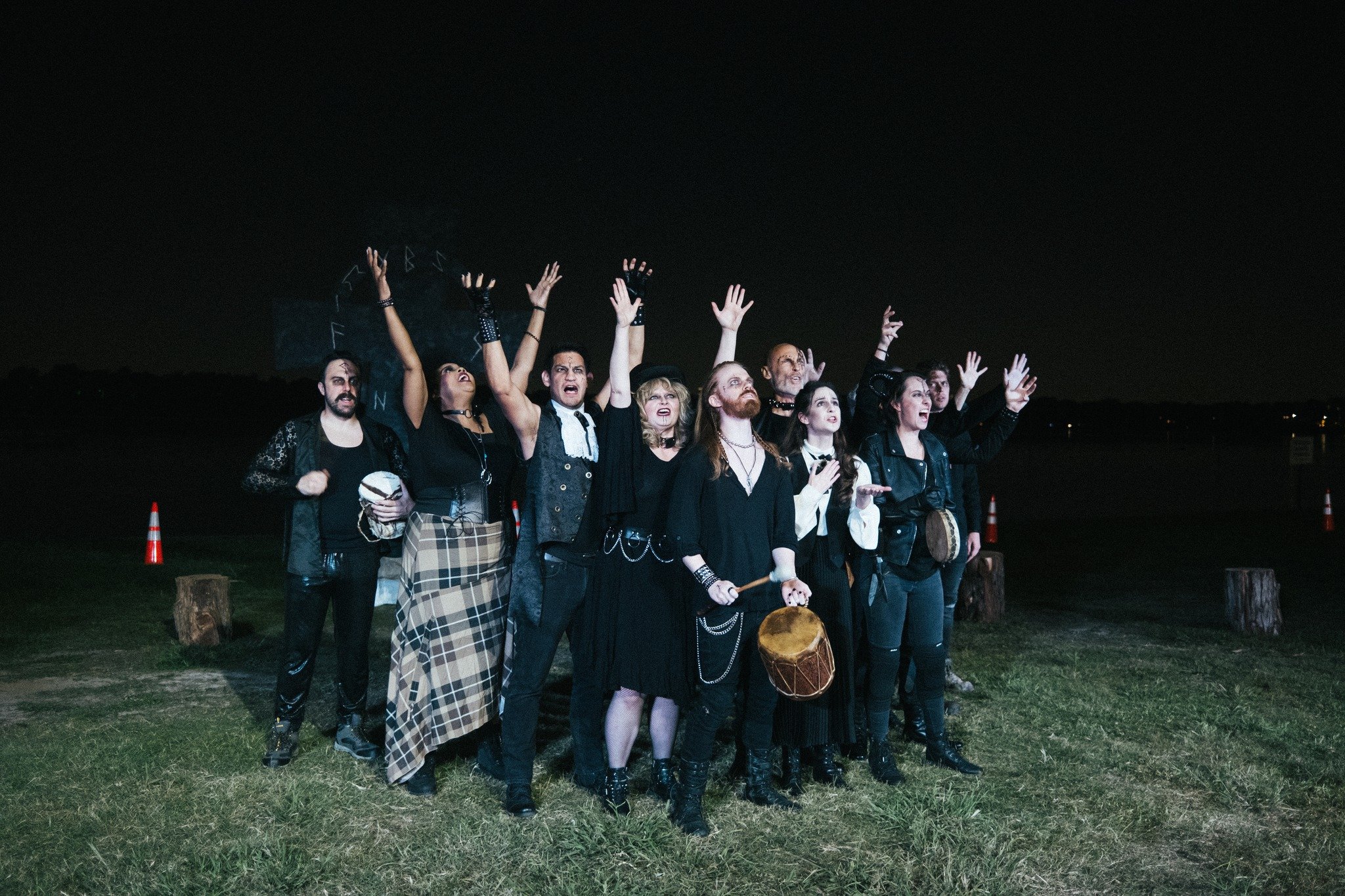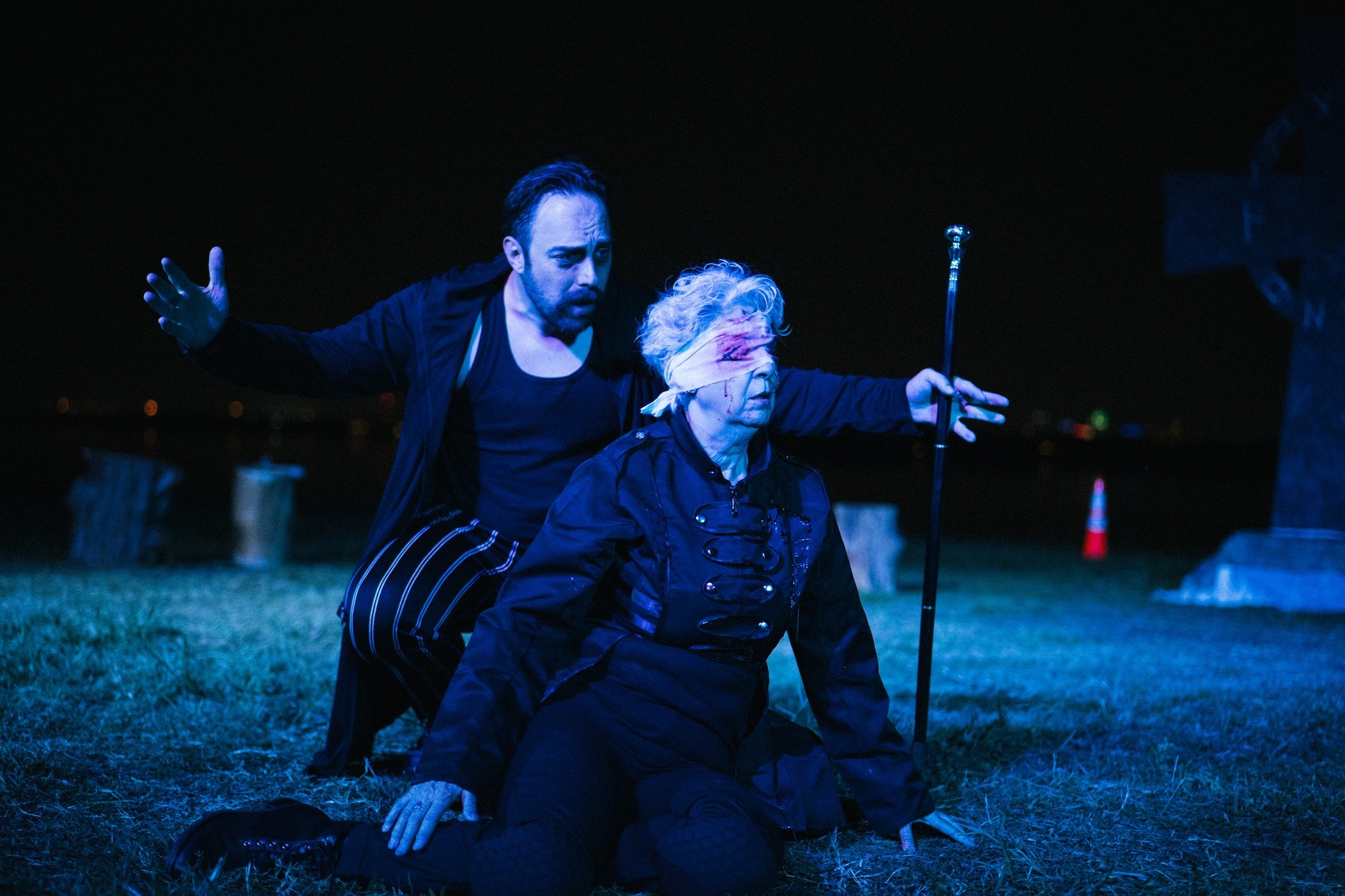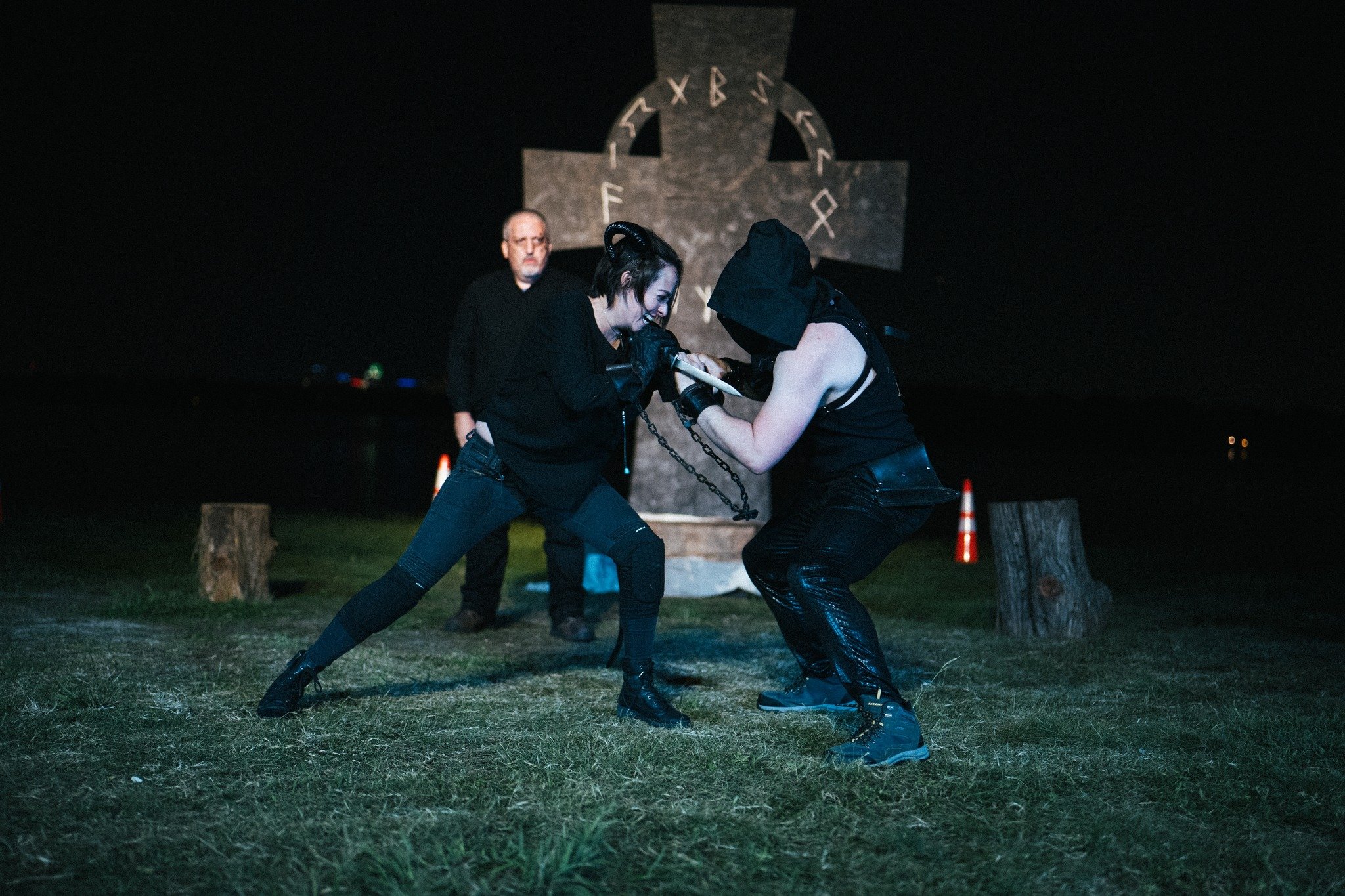King Lear @ Auriga Productions
—Review by Jill Sweeney
It’s useful when examining any of Shakespeare’s plays to keep one thing in mind: the man was an inveterate story thief. From Plutarch’s Lives of the Noble Grecians and Romans (Julius Caesar, Antony and Cleopatra. Coriolanus, Timon of Athens), to Edward Hall and Raphael Holinshed’s English histories (all the Henrys, Richard II and Richard III, King John and more), or stories from Shakespeare’s contemporary, Giovanni Boccaccio (All’s Well That Ends Well, Cymbeline, and The Two Gentlemen of Verona), Shakespeare drew inspiration from all over. But more important than what he took from these sources is often what he didn’t—the elements of the histories or stories he chose to leave out—and what he changed, twisting and shaping for his own ends.
King Lear is a fascinating example of this. The play is drawn from Geoffrey of Monmouth’s (mostly, probably, maybe accurate) 12th-century work History of the Kings of Britain, which tells the tale of 8th-century British king Leir (purportedly the last of Brutus of Troy’s line, legendary founder of Britain and a descendant of Trojan hero Aeneas) and his three daughters, Goneril, Regan, and Cordelia. So far, so familiar, and much of the story tracks with Shakespeare’s retelling: the contest of love between the daughters, the division of the country, Leir’s abdication and eventual betrayal by his two eldest daughters, and the reconciliation with beloved daughter Cordelia.
But Monmouth’s original tale ends happily. Leir, rescued by Cordelia, teams up with the French and overthrows his traitorous daughters and their husbands, retaking the British throne and reigning for three more years before dying and passing the throne to Cordelia. Shakespeare took a comedy (in the classical sense of the word) and turned it tragic; the question, then, is why? Why the shift, why did Shakespeare leave Lear--triumphant in the original tale—a powerless and grieving old man, cradling the daughter who was to be his rescuer and redeemer? There could be any number of answers to this, all or none of which may be correct. But it’s the act of alteration itself, the twisting of the tale, that shows us Shakespeare’s true genius. Others may set the scene, but it’s his lens we’re viewing it through.
Newly formed company Auriga Productions brings their own lens to bear on Lear, with a concept that melds the waning days of ancient Scottish paganism with rock and roll style—yes, really. The result is a fascinating inaugural production with a strong cast that seeks to juxtapose the worshippers of Nature (the Lears and Gloucesters) with Christian converts (Cordelia, Kent, and Edgar), most explicitly in the play’s opening moments, where Cordelia (Marisa Duran)’s entreaties to Mother Mary are drowned out with chants to the old gods. If the concept may not be fully realized by play’s end, kudos to Auriga for taking big swings.
Performed behind the Bath House Cultural Center, on a grassy stage lit with torches and dominated by a Celtic cross scrawled with runes, Lear is anchored by a ferocious performance from Malcolm Stephenson (a veteran stage actor currently co-starring in the western 1883 on Paramount Plus) as the titular king, whose leather vest, studded collar, and fringed wrist bracers make him look (appropriately) like the head of a biker gang ju-ust about to hang it all up.
In Stephenson’s hands and under the thoughtful direction of Auriga co-founder Bert Pigg, Lear’s arc—from power and prestige to madness and grief—is tightly controlled, especially in scenes with heartless daughters Goneril (Octavia Y. Thomas) and Regan (Madyson Greenwood). Stephenson does a beautiful job keeping the emotions grounded and avoiding the histrionics to which some Lears are prone. He offers a real tenderness in his scenes with Duran’s beleaguered Cordelia and a gruff fondness for his loyal Fool (Joel Frapart, bringing a sly wit to some of Shakespeare’s most egregious dick jokes).
Apart from Stephenson, the production’s standout performance is from Meagan Harris as sly, scheming Edmund, the ambitious bastard son of testy, gullible Gloucester (Adriana Bate). Crowned with sleek black devil horns, an angel-faced Harris (Auriga’s co-founder) gleefully brings ruin to both her father and half-brother Edgar (Andrew Manning) while also finding time to seduce both Goneril and Regan on her way up the ladder. You almost hate to see her get her comeuppance in the end, though her final duel with Manning is a heck of a swan song (with lovely work from fight choreographer David Saldivar).
Duran brings both dignity and sweetness to Cordelia, though some pretty substantial cuts to the script leave the character feeling a bit unmoored. Her scenes with the Earl of Kent (Tommy Stuart, doing some impressive accent work), styled as a fellow Christian somewhat on the downlow, bring out some nice facets of each character.
The costume and makeup design (from Jessie Wallace and Kristin Colaneri, respectively) makes for an interesting blend of old and new; the actors are marked with runic facial tattoos, and costumes that blend a sort of glam/goth vibe with more traditional elements. (Thomas’ Goneril is clad in a long, deconstructed tartan skirt, and Bate’s Gloucester sports a modified frock coat with military flair—while Greenwood’s Goneril brings major Stevie Nicks vibes with her bell sleeves and feathered bowler hat.)
There are also some intriguing musical choices made during the piece (Joshua Hahlen, who also plays the ill-fated Oswald, is credited as the show’s music director), including a sung excerpt from Peter Gabriel’s apocalyptic 80s ballad “Red Rain” that contributes to the atmosphere of building dread. However, I will admit that the show’s final musical outro—which I won’t spoil here—left me scratching my head as to its significance, especially if the production means to position its Christian-styled characters as victorious redeemers. But wiser heads than mine may well make more sense of it.
A clever melding of style and substance, a strong cast, and an evocative setting—Auriga Productions’ King Lear is a heck of a kickoff for this newly arrived company. I can’t wait to see what they’ll do next.
WHEN: Through October 22nd
WHERE: Bath House Cultural Center, 521 E Lawther Dr, Dallas, TX 75218



